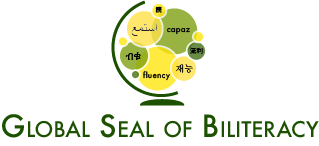Language proficiency levels provide a standardized way of defining and understanding an individual's ability in a specific language. These scales are crucial for employers, educators, individuals, and various institutions in determining one's current linguistic capability and establishing a clear path for progression. In this guide, we will delve deep into what language proficiency scales are, and compare three of the most prominent scales: CEFR, ACTFL, and ILR. By the end, you'll have a comprehensive understanding of each scale and how they relate to one another.
What Are Language Proficiency Scales?
At its core, a language proficiency scale is a framework used to categorize and describe an individual's ability to understand and use a language. These abilities often encompass speaking, listening, reading, and writing. Different scales may also consider cultural and sociolinguistic competence, adding layers of depth to linguistic assessment.
Understanding one's proficiency level can serve multiple purposes:
Educational Planning: Helps educators tailor curricula and teaching methods based on students' levels.
Educational Placement: Provides academic institutions with a way to appropriately place students by proficiency level. Standardized language proficiency tests are used to determine if international students can fully participate in a class taught in another language.
Career Development: Many job roles, especially in diplomatic or multinational domains, require specific language proficiency levels and certain industries offer bilingual pay when presented with a certification of biliteracy.
Personal Benchmarking: For language learners, knowing their proficiency level can be motivating and provide a clear path for advancement.
Comparing the Big Three: CEFR, ACTFL, and ILR
1. CEFR (Common European Framework of Reference for Languages)
Origin: Developed by the Council of Europe and widely adopted across Europe and beyond.
Levels: A1, A2 (Basic User); B1, B2 (Independent User); C1, C2 (Proficient User).
Focus: Holistic approach, encompassing productive (speaking, writing), receptive (reading, listening), as well as sociolinguistic and intercultural competence.
Usage: Utilized globally by many educational institutions and serves as a benchmark for several language exams.
2. ACTFL (American Council on the Teaching of Foreign Languages)
Origin: Developed primarily in the U.S. for educators and learners.
Levels: Novice (Low, Mid, High), Intermediate (Low, Mid, High), Advanced (Low, Mid, High), Superior, and Distinguished.
Focus: Detailed on speaking and listening skills but does cover reading and writing.
Usage: Common in the U.S. education system.
3. ILR (Interagency Language Roundtable)
Origin: Developed for the U.S. government's diplomatic and intelligence needs.
Levels: 0-5, with "+" designations and some "minus" sublevels for further granularity.
Focus: Covers a broad range of language skills, including speaking, listening, reading, and writing.
Usage: Commonly used within the U.S. government to assess federal employees.
How Do They Stack Up?
Granularity: ACTFL provides a detailed breakdown within early and intermediate levels, making it ideal for educational settings. ILR's "+" and "minus" sublevels add granularity, while CEFR's six broader levels serve to measure language used daily in the workplace and academia.
Focus: While all three scales address speaking, listening, reading, and writing, CEFR stands out for its emphasis on cultural and sociolinguistic competence.
Universality: CEFR arguably has the most international acceptance given its adoption beyond Europe. ACTFL is more U.S.-centric, and ILR, though American, is used internationally but with a more narrow focus on government applications.
Conclusion
Understanding language proficiency levels is fundamental for anyone involved in language learning, teaching, or assessment. While the CEFR, ACTFL, and ILR scales offer different perspectives and levels of detail, they all aim to provide a structured framework for gauging linguistic ability. Depending on your needs and context, one scale may be more appropriate than the others. However, having knowledge of all three will undoubtedly give you a well-rounded perspective on global language proficiency standards.
We hope this guide illuminated the intricate world of language proficiency for you. Remember, no matter the scale, the journey of language learning is rich, rewarding, and uniquely personal.

